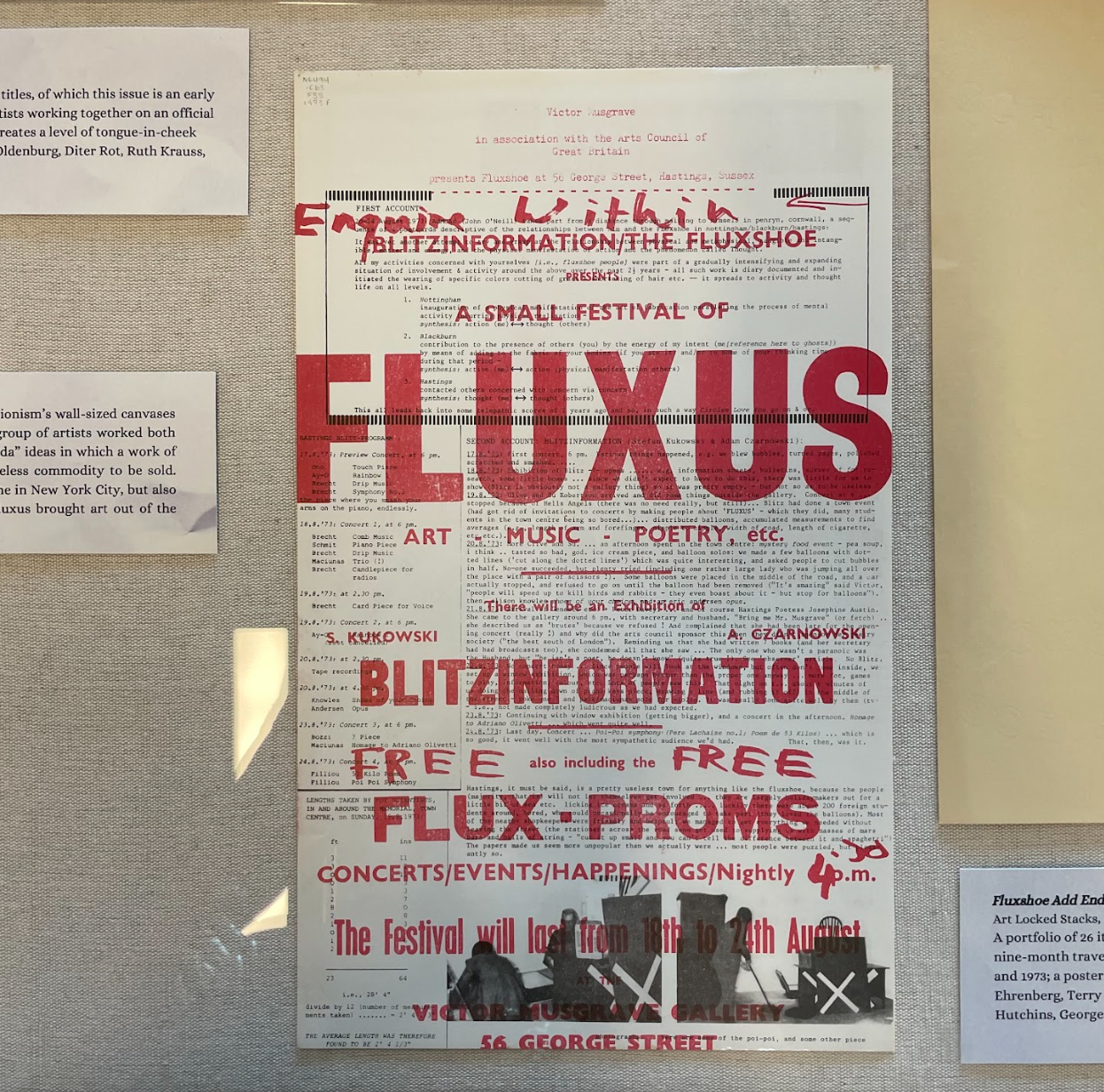Editor’s Note: This article is a review and includes subjective thoughts, opinions and critiques.
When perusing the display cases at Bowes Art & Architecture Library last quarter, library-goers might have been taken aback by a small square labeled as “part of a painting slept on by John & Yoko.” This amusing object, alongside randomly-generated poems, a fold-out box containing a glass key and humorous manuals on how to repair a favorite cup with “glue and this poem,” was featured in an exhibit hosted at Bowes.
These seemingly unrelated relics are all united by the term “Fluxus,” brought together at Stanford in “This is Not Here: Some Fluxus Things from Bowes Art & Architecture Library.”
Fluxus was an artistic movement led by a loose confederation of visual artists, poets and musicians working in New York in the 1960s and 1970s. The Bowes exhibit featured a copy of the “Fluxus Manifesto” penned by artist George Maciunas in 1963, which set the foundations of the movement.
The core tenant of Fluxus, outlined in the manifesto, was a rebellion against art world conventions, with a focus on uplifting “living art” that reaffirms the delicateness of the everyday experience, rather than treating art as something to be sold as commodity. The manifesto developed into other Fluxus dictionaries: “Fluxus Preview Review,” for example, took the form of a long vertical scroll, which lists definitions of the word “flux” such as “act of flowing,” or “the setting in of the tide toward the shore.”
The first glass display case of four featured in “This is Not Here” exhibited overarching documents of Fluxus, including “How we Met, or a Microdemystification,” a playful, quasi-historical book collecting accounts of how different Fluxus artists came together. It is flipped open to a 1976 drawing by artist Takako Saito made up of thin red caricatures of Saito’s Fluxus colleagues, complete with jotted-down notes of how she knew each person.
One anecdote recalls that Saito “babysat the six-month-old twin daughters of Dick Higgins and Alison Knowles.” The inclusion of such intimate everyday moments illuminates the playfulness and interpersonal nature of Fluxus as an artistic movement.
The Fluxus “things,” curated by head librarian Lindsay King, made up a Tetris-like puzzle of wonders, each piece adding a thought-provoking idea or visual element to the collection. King placed the objects in conversation with one another to convey the multidimensional tone of Fluxus; some objects are satirical, others are emotionally moving and others invoke shades of protest.
Artist Nam June Paik, widely considered the father of video art, is representative of both the witty and thoughtful sides of the Fluxus troupe. Paik states in his 1976 manifesto, which was also on view at “This is Not Here,” that “the real issue implied in ‘Art and Technology’ is not to make another scientific toy, but how to humanize the technology and the electronic medium, which is progressing rapidly — too rapidly.”
Paik’s psychic nod to the direction of technological advancement is an example of the forward-thinking, culturally in-tune nature of the Fluxus practice, especially in relation to Stanford as an institution. The inclusion of his work in “This is Not Here” provided a new lens with which to view the University’s culture of innovation.
In a traditionally academic space, the event of coming across art that has a sense of humor is a gift. The eccentric items on display at Bowes could go unnoticed by a flustered passerby, or could just as easily grip a student’s attention and fill the room with laughter.
The very title of the exhibit is a nod to Fluxus artist Yoko Ono’s “This is Not Here,” an art piece that puts a satirical spin on the concept of a newspaper. In her piece, which was featured at Bowes last quarter, Ono repurposed a trusted method of circulating information to impart subversive, unexpected messages.
The simultaneous now-ness and growing historical significance of the Fluxus objects, many of which date back to the 1960s and 1970s, make their presence in a library that much more important.
Located next to the Cantor Museum, home to Stanford’s most prestigious artworks, Fluxus objects are perhaps the opposite of that prestige. All the same, they are art: allusions of the past, repeating itself unto the future. In drawings and poems, manuals and instruction booklets, audiences may imagine a happening and muse its reinvention.
